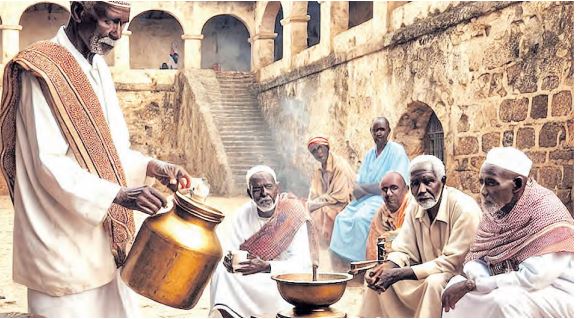The most uniquely dramatic building in Mombasa remains Fort Jesus built 430 years ago, permanently and resolutely facing the entrance to the old port and the town it was built to protect and enable to grow sensibly.
Near the entrance of Fort Jesus is an old traditional Swahili coffee vendor with his brass coffee pot on a charcoal burner, next to an informal seating area which, without any signage or spoken notice, is reserved for a group of old men who sit there and converse virtually every day.
No one joins them unless invited by one of the group members. How membership is attained and how such vendors have succeeded over the years is a mystery to all but a closed circle.
These are the wise men, with collective lived experience and knowledge, who are the custodians of the ethos of Mombasa and its culture.
The rapid development and growth of Mombasa are due to gentrification – a process of urban renewal and transformation whereby wealthier individuals or businesses displace lower-income residents because of rising demand for land, hence, rising property value.
This gentrification has resulted in a change in local culture and prevailing demographics; in turn, this has brought haphazardness to Mombasa’s planning, with questionable value to citizens’ aspirations for better lifestyles and livelihoods.
A recent caucus group meeting, in which I participated, explored three ways to manage gentrification by Mombasa county, with a focus on the twin components of Swahili culture and access to the seafront.
The objective was to formulate how residents can best be protected from disenfranchisement without losing the momentum of the city’s growth or its cultural value.
The first aspect is zoning. This would entail published limits of density, heritage conservation measures and adaptive usage.
This could entail height and density restrictions on waterfront plots from Mkomani to Shanzu, permitting plots to progressively also enjoy the principal values of sea views and access to beaches.
In Old Town, which is considered the cultural epicentre, a financially sound structure ought to be facilitated so the cultural value of the asset is not lost by the owners.
This could mean access to a conservation building fund or leverage of cultural value financing to facilitate adaptive reuse of the buildings.
The second aspect would be the decentralisation of utility provision in favour of shared community services.
This shift would see the establishment of off -grid power supply, rainwater harvesting, treatment and recycling plants and a low-impact waste management system.
These developments would require the community’s buy-in, whether in the Old Town or along the seafront, as no owner or developer can single-handedly, sustainably, or successfully undertake providing these services.
Land for such utilities would have to be found and acquired if not owned by the county.
The last aspect discussed was vehicular circulation and parking, as well as pedestrian walkways and open spaces, including cultural hubs.
Mass commuting is a reality, whether for work or leisure; therefore, safety, security, short duration and ease of movement are key for both vehicles and pedestrians.
Strategic provision of commuter terminals, road carriageways, pedestrian walkways, vehicle parking lots and public squares can be made more efficient with technological advancement in access controls, stack parking structures and real-time monitoring and response systems.
The arduous task of managing gentrification falls well within the county’s mandate and technical capacity to roll it out.
Mombasa, like most counties, has powerful tools at its disposal to do this. One is the ownership of land and properties it is tasked to develop for the public good.
Another is the legal authority to create bylaws that must be obeyed as long as they do not conflict with existing laws or the Constitution.
These two instruments are sufficient to eff ectively manage Mombasa’s gentrifi cation, yet no form of concept, proposal, or implementation matrix is known to exist.
The question now is this: Is the combined force of the Mombasa chapters of the Law Society of Kenya and Architectural Association of Kenya able to perform a role similar to that of the wise old men at Fort Jesus and save Mombasa?












